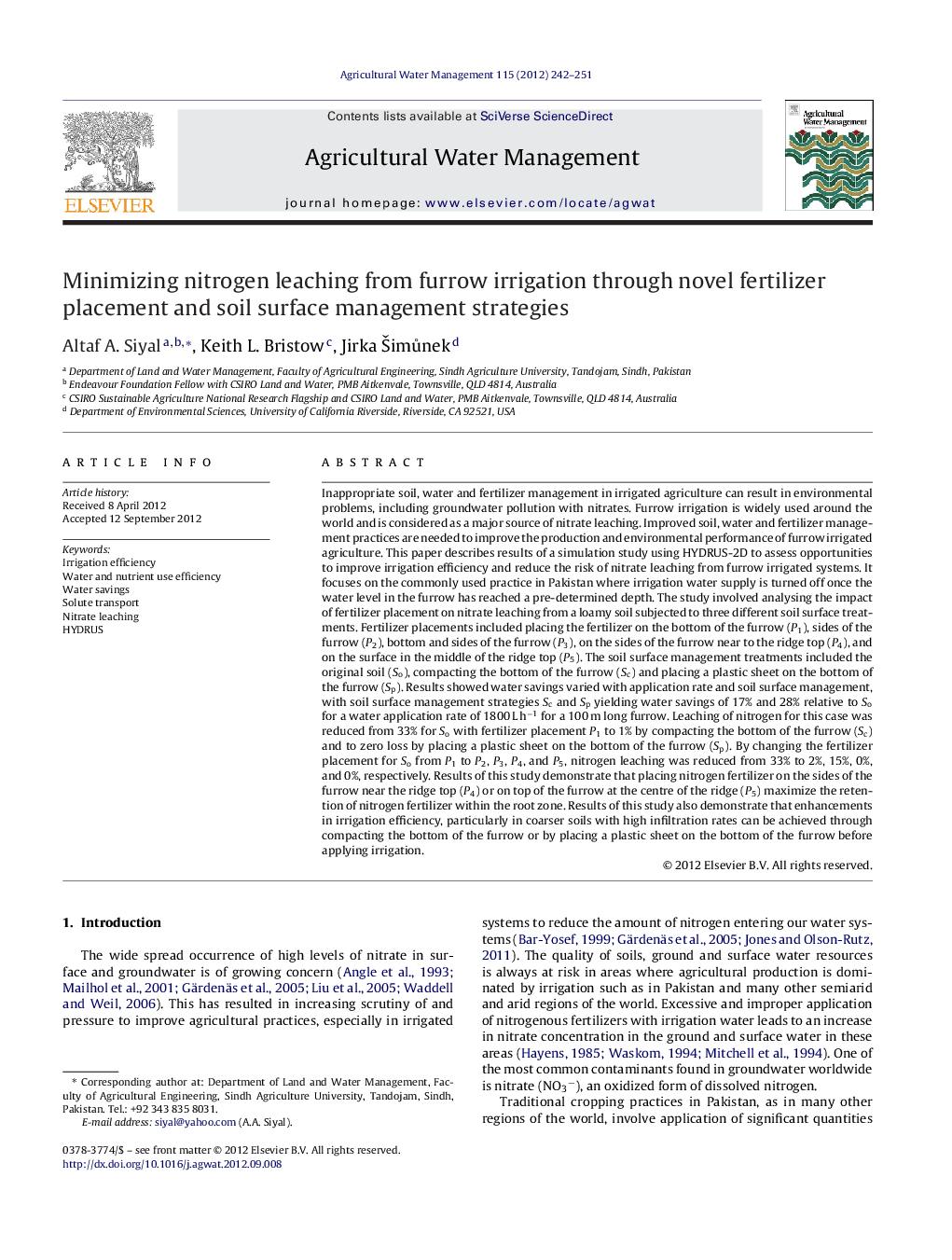| کد مقاله | کد نشریه | سال انتشار | مقاله انگلیسی | نسخه تمام متن |
|---|---|---|---|---|
| 4479069 | 1622964 | 2012 | 10 صفحه PDF | دانلود رایگان |

Inappropriate soil, water and fertilizer management in irrigated agriculture can result in environmental problems, including groundwater pollution with nitrates. Furrow irrigation is widely used around the world and is considered as a major source of nitrate leaching. Improved soil, water and fertilizer management practices are needed to improve the production and environmental performance of furrow irrigated agriculture. This paper describes results of a simulation study using HYDRUS-2D to assess opportunities to improve irrigation efficiency and reduce the risk of nitrate leaching from furrow irrigated systems. It focuses on the commonly used practice in Pakistan where irrigation water supply is turned off once the water level in the furrow has reached a pre-determined depth. The study involved analysing the impact of fertilizer placement on nitrate leaching from a loamy soil subjected to three different soil surface treatments. Fertilizer placements included placing the fertilizer on the bottom of the furrow (P1), sides of the furrow (P2), bottom and sides of the furrow (P3), on the sides of the furrow near to the ridge top (P4), and on the surface in the middle of the ridge top (P5). The soil surface management treatments included the original soil (So), compacting the bottom of the furrow (Sc) and placing a plastic sheet on the bottom of the furrow (Sp). Results showed water savings varied with application rate and soil surface management, with soil surface management strategies Sc and Sp yielding water savings of 17% and 28% relative to So for a water application rate of 1800 L h−1 for a 100 m long furrow. Leaching of nitrogen for this case was reduced from 33% for So with fertilizer placement P1 to 1% by compacting the bottom of the furrow (Sc) and to zero loss by placing a plastic sheet on the bottom of the furrow (Sp). By changing the fertilizer placement for So from P1 to P2, P3, P4, and P5, nitrogen leaching was reduced from 33% to 2%, 15%, 0%, and 0%, respectively. Results of this study demonstrate that placing nitrogen fertilizer on the sides of the furrow near the ridge top (P4) or on top of the furrow at the centre of the ridge (P5) maximize the retention of nitrogen fertilizer within the root zone. Results of this study also demonstrate that enhancements in irrigation efficiency, particularly in coarser soils with high infiltration rates can be achieved through compacting the bottom of the furrow or by placing a plastic sheet on the bottom of the furrow before applying irrigation.
► We model soil water flow and nitrogen transport in furrow irrigated systems.
► Nitrogen fertilizer placement and soil surface management strategies are analysed.
► Using a plastic cover or compacting the furrow results in significant water savings.
► Results highlight opportunities for improving water and nitrogen use efficiency.
► Improved efficiencies lead to significant reductions in deep drainage/leaching.
Journal: Agricultural Water Management - Volume 115, December 2012, Pages 242–251